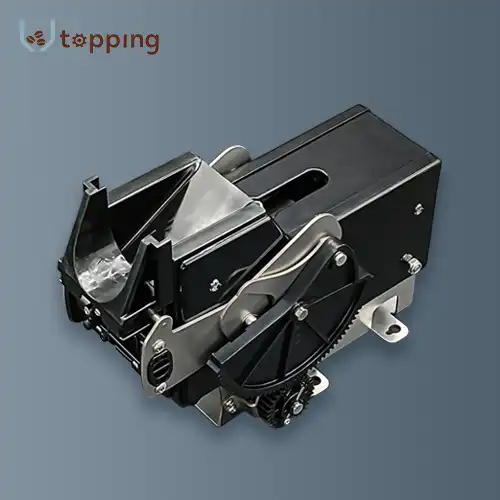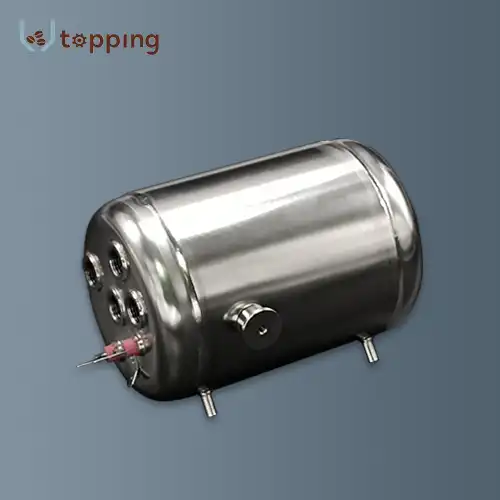Coffee Bean Hopper Seal Type
2024-12-23 10:27:26
Importance Of Coffee Bean Hopper Sealing
The sealing of coffee bean hoppers plays a crucial role in preserving the quality and flavor of coffee beans. Understanding why sealing is necessary and the consequences of poor sealing can help coffee enthusiasts and professionals alike make informed decisions about their coffee storage and preparation methods.
Why is sealing necessary? Coffee beans are highly susceptible to environmental factors that can significantly impact their flavor and aroma. Proper sealing is essential for several reasons. Firstly, it prevents oxidation, which occurs when coffee beans are exposed to oxygen. Oxidation can lead to the degradation of the oils in coffee beans, resulting in a loss of flavor and aroma. Secondly, effective sealing helps maintain the freshness of the beans by preventing moisture from entering the hopper. Moisture can cause the beans to become stale and can even lead to the growth of mold. Lastly, a good seal prevents odor invasion. Coffee beans are known for their ability to absorb odors from their surroundings, which can adversely affect their taste. By keeping the hopper properly sealed, you ensure that your coffee beans maintain their intended flavor profile without picking up unwanted aromas.
The consequences of poor sealing can be detrimental to the quality of your coffee. When coffee beans are not properly sealed, they are exposed to air, which accelerates the oxidation process. This can result in a sour or rancid taste in your brewed coffee. Additionally, poorly sealed hoppers may allow moisture to enter, leading to the development of an unpleasant, moldy flavor. Another common issue with inadequate sealing is the development of an oily taste. This occurs when the natural oils in the coffee beans break down due to exposure to air and light, resulting in a less pleasant and potentially bitter brew. Furthermore, beans stored in poorly sealed hoppers may lose their distinctive flavors more quickly, leading to a flat or dull-tasting coffee.
Seal Type
The seal type of the coffee bean hopper is indeed crucial to maintaining the freshness and quality of coffee beans. Different seal types offer varying levels of protection against environmental factors that can degrade coffee quality. Let's explore some common seal types used in coffee bean hoppers:
Airtight Seal: This is one of the most common and effective seal types for coffee bean hoppers. An airtight seal creates a barrier that prevents air from entering or leaving the hopper. This type of seal typically uses rubber gaskets or silicone seals to create a tight fit between the hopper and its lid. Airtight seals are effective at preventing oxidation and maintaining the freshness of coffee beans. They're often found in both home and commercial coffee machines due to their reliability and ease of use.
Vacuum Seal: Vacuum sealing is a more advanced method of preserving coffee beans. This type of seal removes air from the hopper, creating a vacuum environment that significantly slows down the oxidation process. Vacuum seals are highly effective at preserving the freshness and flavor of coffee beans for extended periods. However, they are typically more complex and expensive than airtight seals, and are more commonly found in high-end or commercial coffee equipment.
Displacement Seal: This type of seal works by displacing the air in the hopper with an inert gas, usually nitrogen or carbon dioxide. The inert gas pushes out the oxygen, creating an environment that prevents oxidation. Displacement seals are highly effective at preserving coffee freshness but are less common due to their complexity and the need for specialized equipment. They are primarily used in large-scale commercial operations or by specialty coffee roasters who prioritize long-term bean storage.
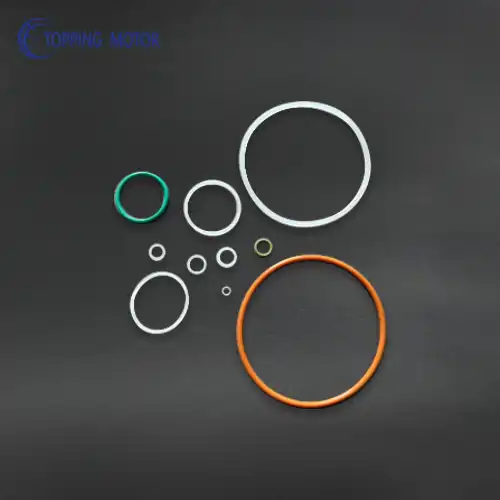
How To Choose The Right Seal Type
Selecting the appropriate seal type for your coffee bean hopper depends on several factors. Understanding these can help you make an informed decision that balances effectiveness, practicality, and cost.
Coffee bean hopper material: The material of the hopper can influence the choice of sealing method. For instance, plastic hoppers often work well with airtight seals using rubber or silicone gaskets. Glass hoppers might be better suited for vacuum seals due to their non-porous nature. Stainless steel hoppers can accommodate various seal types but may require specific designs to ensure a proper seal.
Frequency of use: The frequency with which you use your coffee machine should inform your choice of seal type. For coffee machines that are used frequently, such as in busy cafes or restaurants, a simple yet effective airtight seal might be the most practical choice. It allows for easy access while still providing adequate protection. For less frequent use or for storing larger quantities of beans, a vacuum seal or displacement seal might be more appropriate as they offer superior long-term preservation.
Environmental factors: The environment in which your coffee machine operates can significantly impact the effectiveness of different seal types. In humid environments, for example, a more robust sealing method like vacuum sealing might be necessary to prevent moisture from affecting the beans. Similarly, in areas with significant temperature fluctuations, a seal that can maintain a stable internal environment becomes crucial.
Budget: The cost difference between sealing methods can be substantial. Airtight seals are generally the most affordable option, making them popular for home use and small businesses. Vacuum seals and displacement seals, while more effective, come at a higher cost due to their complexity and the additional equipment required. When considering your budget, it's important to balance the initial cost against the potential savings from better-preserved coffee beans and reduced waste.
It's worth noting that regardless of the seal type chosen, regular maintenance and inspection of the sealing mechanism is crucial. Even the most advanced seal can become ineffective if not properly maintained. Regular cleaning and checking for wear and tear can ensure that your chosen seal continues to protect your coffee beans effectively.
Coffee Bean Hopper For Sale
When selecting a coffee bean hopper, it's essential to consider one that offers compatibility with various coffee bean types to ensure versatility in your coffee preparation. The Topping Motor Coffee Bean Hopper provides this flexibility, accommodating different types of coffee beans to suit diverse preferences and brewing methods. If you're in the market for a new coffee bean hopper or looking to upgrade your current setup, it's crucial to consider factors such as seal type, material quality, capacity, and ease of use. For those interested in exploring options from reputable Coffee Bean Hopper manufacturers, you can reach out to sales@huan-tai.org for more detailed information and guidance on selecting the right hopper that meets your specific needs and preferences.
References
1. Specialty Coffee Association. (2023). "Coffee Freshness and Storage Best Practices."
2. Journal of Food Science. (2022). "Effects of Storage Conditions on Coffee Bean Quality."
3. International Journal of Food Science and Technology. (2021). "Comparative Study of Coffee Bean Storage Methods."
4. Coffee Science Foundation. (2023). "The Impact of Oxidation on Coffee Flavor."
5. Food Chemistry. (2022). "Analysis of Volatile Compounds in Stored Coffee Beans."
6. European Food Research and Technology. (2023). "Effectiveness of Different Sealing Methods for Coffee Bean Storage."
Send Inquiry
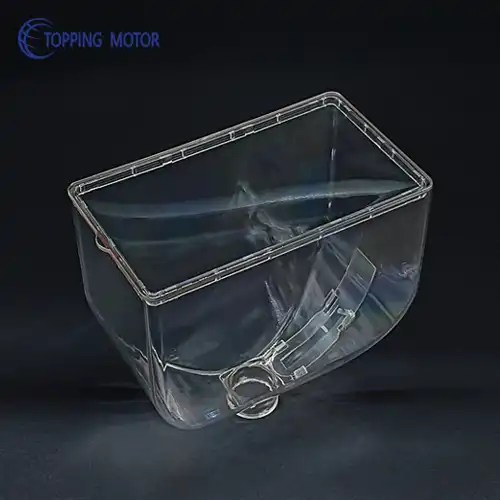

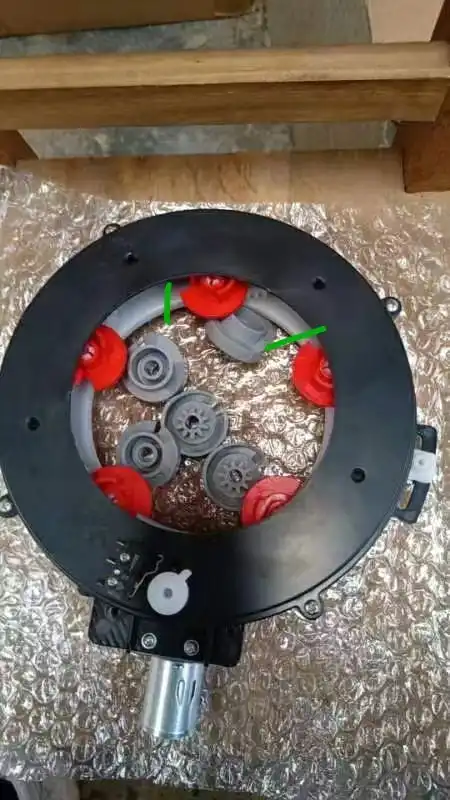
.webp)
.webp)
